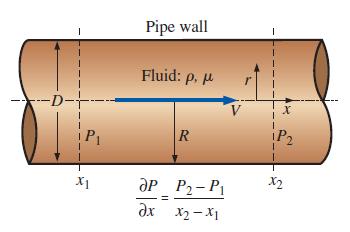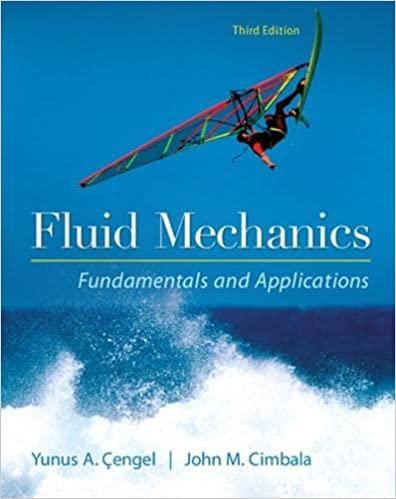In Example 918 we solved the NavierStokes equation for steady, fully developed, laminar flow in a round
Question:
In Example 9–18 we solved the Navier–Stokes equation for steady, fully developed, laminar flow in a round pipe (Poiseuille flow), neglecting gravity. Now, add back the effect of gravity by re-solving that same problem, but use modified pressure P´ instead of actual pressure P. Specifically, calculate the actual pressure field and the velocity field. Assume the pipe is horizontal, and let the datum plane z = 0 be at some arbitrary distance under the pipe. Is the actual pressure at the top of the pipe greater than, equal to, or less than that at the bottom of the pipe? Discuss.
Data from Example 9-18
Consider steady, incompressible, laminar flow of a Newtonian fluid in an infinitely long round pipe of diameter D or radius R = D/2 (Fig. 9–71). We ignore the effects of gravity. A constant pressure gradient ∂P/∂x is applied in the x-direction,

where x1 and x2 are two arbitrary locations along the x-axis, and P1 and P2 are the pressures at those two locations. Note that we adopt a modified cylindrical coordinate system here with x instead of z for the axial component, namely, (r, θ, x) and (ur, uθ, u). Derive an expression for the velocity field inside the pipe and estimate the viscous shear force per unit surface area acting on the pipe wall.
FIGURE 9–71

Step by Step Answer:

Fluid Mechanics Fundamentals And Applications
ISBN: 9780073380322
3rd Edition
Authors: Yunus Cengel, John Cimbala





